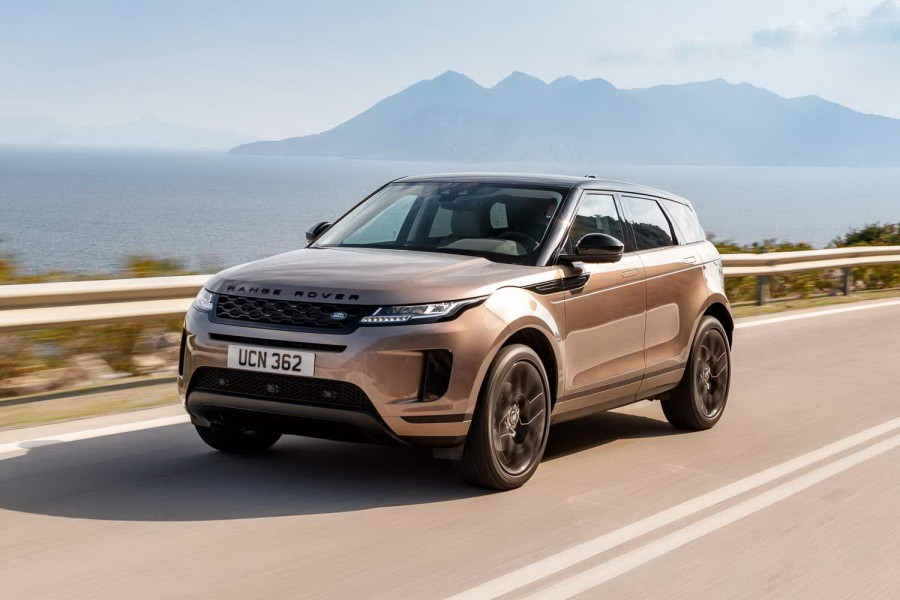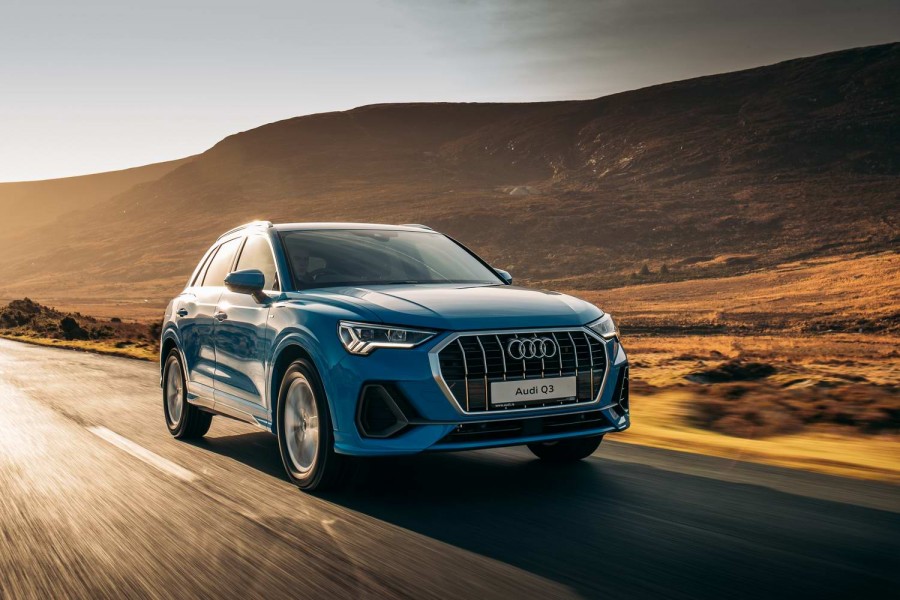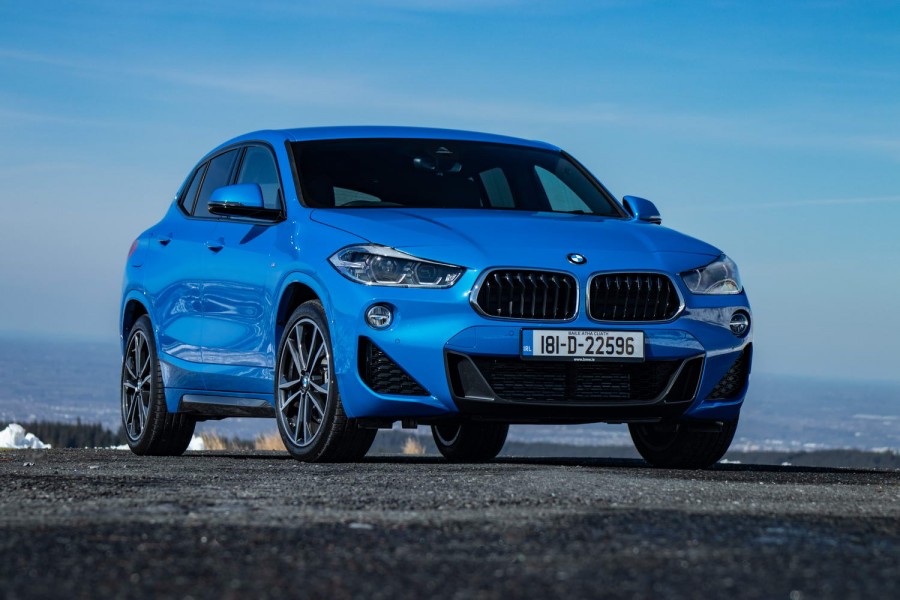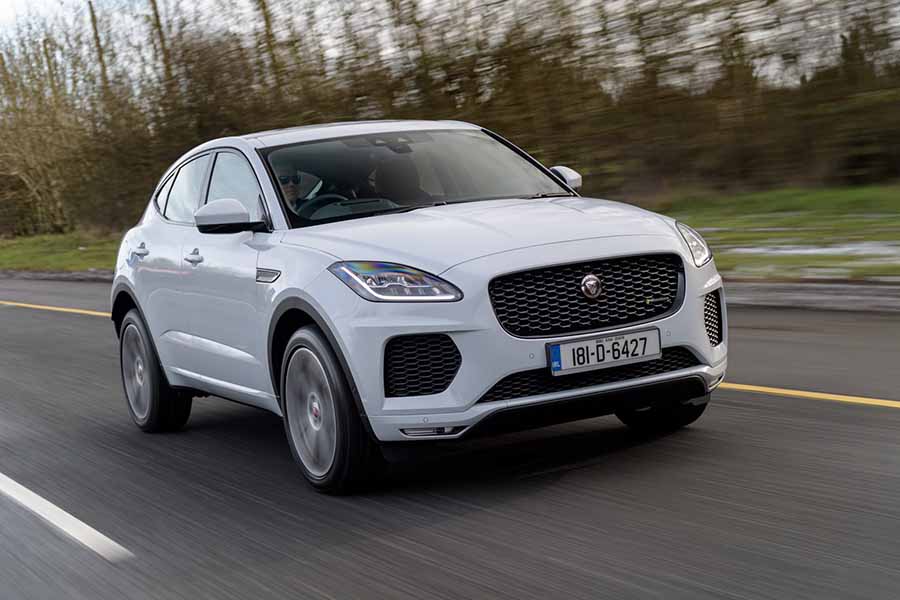The Range Rover Evoque proved to be a massive success for Land Rover when it went on sale in 2011. Now it's time for the second-generation Evoque and, unlike its predecessor, which came in three- and five-door body styles, as well as a convertible, it will only be a five-door SUV, as some 95 per cent of the original were in this guise.
In the metal
Considering the success to date of the Range Rover Evoque, it's understandable why Land Rover's Chief Design Officer, Gerry McGovern, and his team didn't want to tamper with a winning formula. At first glance, it's easy to tell that it's an Evoque, though the styling is more modern, cleaner and falls into line with the larger Range Rover Velar, the model that sits above it in Land Rover's range.
Despite the familiar image, only the door hinges from the previous Evoque have been carried over. Everything else is entirely new, and that includes the platform, which accommodates new mild hybrid technology and, from 2020, also a plug-in hybrid powertrain. The overall dimensions have barely changed, with the car growing by just 1mm in length.
The side profile of the Evoque looks as smart as before, with a similar sloping roofline to give the car a sporty look. New front and rear light clusters appear sleeker and gone are the plastic mouldings around the sills and wheel arches that signified the previous model's off-road prowess. Neat features like door handles that close to sit flush with the bodywork add to a design that is sharp and modern. Buyers can choose from a broad range of exterior style upgrades, too. These range from copper-coloured inserts on the wings and a contrasting black roof to a selection of alloy wheel designs that go up to 21 inches in diameter.
One of the benefits of the new chassis is that Land Rover has been able to stretch out the distance between the wheels. The result is more passenger space inside, with rear knee room increasing by 20mm, for example. Boot capacity is up slightly, to 591 litres, and throughout the cabin there are larger storage areas, including a bigger glovebox.
But there are far nicer things inside the new Evoque to get excited about than a better glovebox. The overall design is bordering on minimalist, and the quality of finish in the different cars we drove seems to be to a very high standard. Aside from the traditional premium leather upholstery options, Land Rover offers more sustainably sourced materials, such as a Kvadrat wool blend, a 'Dinamica' suede and even Eucalyptus wood.
The Evoque's dashboard design draws from that of the Velar, and SE-spec models and above feature a 10-inch touchscreen display that tilts out when the car is turned on. Its glossy finish and rounded edges have the look and feel of a top-line smartphone, and the menu infotainment system is much quicker to react to inputs than the old unit.
Below that, again on SE and above, is a second touchscreen display that contains all the controls for the temperature and various drive mode and driver assistance systems. Two rotary dials operate multiple functions depending on how you use them. Behind this is a semi-hidden storage area for items like your phone or a purse or wallet. Between the seats are two decently-sized cup holders and under the armrest is an additional 4.5 litres of storage.
Optionally, buyers can also add a 12.3-inch digital instrument display that replaces the basic analogue dials that have a small TFT display between them. Land Rover also offers a colour head-up display. The multifunction steering wheel contains two gloss black control panels that illuminate the related functions as they are required and a traditional automatic gear selector replaces the rotary drive selector of old.
Driving it
Along with those cosmetic changes, the mechanical underpinnings of the Range Rover Evoque are entirely new. Its body is some 13 per cent stiffer than before and underneath there's a new cast aluminium front subframe that is three times stiffer than before. That additional overall chassis stiffness works with front and rear suspension that is 16- and 11 per cent softer respectively than before.
The result is a high standard of rolling comfort and good absorption of big bumps before they resonate through to the cabin. Cars with the largest 21-inch wheels automatically receive adaptive damping, but we found there to be little difference in overall ride quality between this and the standard passive suspension. The latter keeps the car level in the corners and on the smaller 20-inch wheels delivers a comfortable ride. Dropping down another inch on the wheel size would add more comfort yet, naturally.
What becomes quickly apparent is how much more refined the new Evoque is on the road. At motorway cruising speeds, other than some wind noise around the mirrors, it provides a relaxing drive. We've been critical of Land Rover's Ingenium diesel engines in the past for being less polished than other rival diesels. Now, in this more powerful D 240 trim at least, the engine's performance is markedly improved, with lower noise levels and smoother power delivery, partly thanks to the latest nine-speed automatic transmission. But there are instances when it doesn't respond as quickly as you would like. Going for a quick overtake is helped by manually dropping down a gear via the wheel-mounted paddle rather than waiting for the gearbox to kick down after you've pressed the throttle pedal. However, the Evoque's hefty weight - 1,880kg with fuel - does dull the outright pace and performance. It doesn't deliver a surge of roll-on acceleration that you might expect 500Nm of torque to provide, but it can tow up to 2,000kg of braked trailer.
The Evoque's weight doesn't negatively impact its handling, however. It holds its line easily and feels agile at different speeds. There isn't a great deal of feedback through the steering wheel, but positioning and placing the car for a corner is smooth and accurate.
Fuel consumption in our hands didn't come that close to matching Land Rover's official 6.5 litres/100km. Over a long day's driving on a variety of scenarios from city and motorway driving to off-road, our Evoque used 9.5 litres/100km. We'd add that, during steady driving, the all-wheel-drive system decouples drive to the rear axle to reduce fuel consumption. Land Rover's engineers also say that the mild hybrid system, which only alleviates the load on the engine rather than providing any power boost or electric-only driving, equates to a six per cent fuel saving over a combined run.
Speaking of off-road, while many Evoque customers may be unlikely to tackle anything more challenging than a gravel car park, the baby Range Rover is quite capable on the rough stuff. The short overhangs and 212mm ground clearance help, but it is the driver assistance features that will give confidence to owners in tricky situations.
What you get for your money
The Range Rover Evoque is available with several specification grades, spread across two main versions - the Evoque and Evoque R-Dynamic. The entry model comes with 17-inch alloy wheels, LED headlights, fabric upholstery and the 10-inch Touch pro infotainment system. Other standard features include cruise control with a speed limiter function, front and rear parking sensors, automatic emergency braking, lane keep assist and a reversing camera. The Evoque S spec adds 18-inch wheels, leather upholstery, satnav and traffic sign recognition.
You need to upgrade to Evoque SE spec to gain the tilting Touch Pro Duo infotainment system, and this also comes with the digital instrument display, upgraded LED headlights with a daytime running light signature, electrically operated tailgate and parking assistance.
The Evoque R-Dynamic models get a different exterior design package and come in four different versions that follow a similar theme to the regular Evoque. Wheel sizes vary from 17- to 21 inches. Land Rover will also offer a First Edition model for one year from launch. This launch-spec variant comes with almost all of the main features as standard.
Summary
The off-road ability of the Range Rover Evoque may go over most people's heads, but even if you consider SUVs to be a fashion statement, this is right on trend. With better quality, more technology and an even more appealing design, the new Evoque is every bit the small Range Rover you might expect it to be.































